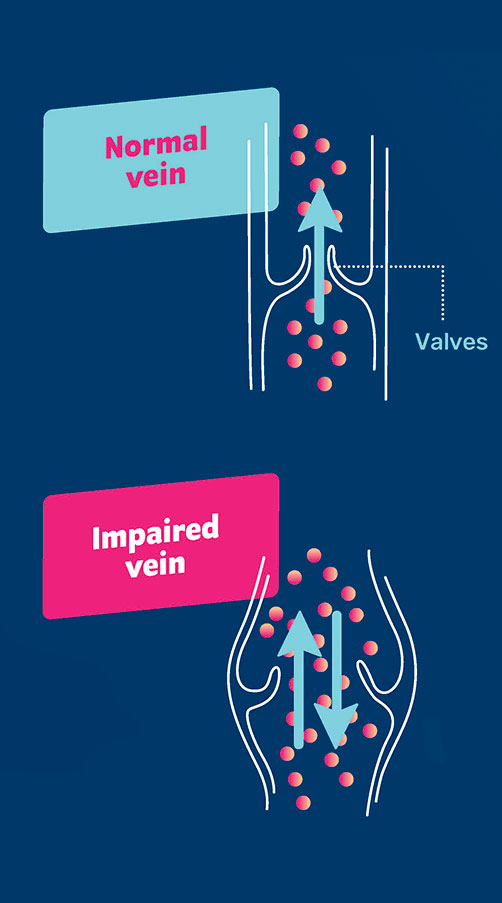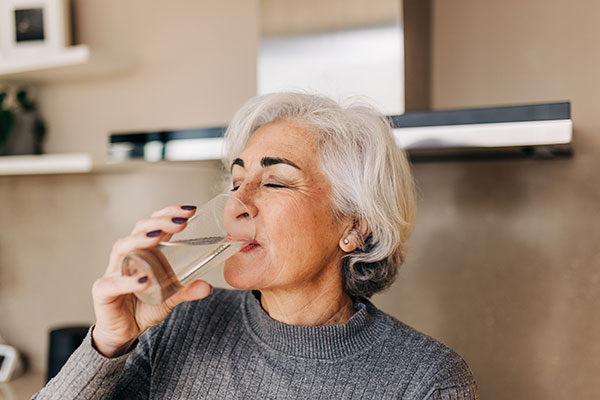We often associate the word ulcer with other health issues in the body, such as stomach or mouth ulcers, rather than a condition affecting the legs. Whether you have an ulcer yourself, or you want to support a loved one, you’re not alone. In fact, 730,000 leg ulcers are treated by the NHS in the UK each year.1
A leg ulcer is defined by the NHS as a long-lasting sore that takes more than two weeks to heal, and usually occurs on the inside of the leg, between the knee and ankle. The ulcer begins with an initial break to the skin, which can have many causes – from a simple scratch in the garden, to an insect bite, or a knock to the shin. There are two main types of leg ulcers: venous and arterial. Let’s focus on the most common type for now, which makes up over 60% of cases – venous ulcers.2
Venous ulcers can develop due to venous insufficiency, where the one-way valves in our veins which help keep blood going in the right direction towards the heart, are impaired. This results in blood flowing back the wrong way where it pools in the legs. This is called venous insufficiency and prevents tissues from receiving sufficient oxygen, resulting in an ulcer usually near the ankles or the inner side of the lower leg.
These ulcers are long-lasting and can be difficult to heal, so understanding how the main treatment for leg ulcers works is important. This also helps us to understand how to also prevent them in the future.

- Damaged veins have valves that do not meet in the middle resulting in backflow
- After assessment by a suitable trained health professional compression bandaging or hosiery should be worn
- This compression splints the damaged veins, allowing the valves to meet in the middle again to prevent the backflow and promote healing of the ulcer
Our skin’s ability to heal normally changes with various risk factors – one of main factors is ageing. The skin loses collagen and elasticity, making it thinner and more vulnerable to breaks and tears. This is why 1 in 50 people over the age of 80 have a leg ulcer. Inadequate nutrition, obesity, history of blood clots and smoking can all contribute to higher risk.2
Promoting healing and preventing leg ulcers
There are ways we can help reduce our risk of getting ulcers or help with recovery if we have them already.
The food we eat feeds our skin, enhancing its ability to heal when we have injuries. Vitamins, healthy fats, and minerals make their way to the skin through blood vessels, helping us to heal faster. You can find delicious healthy recipes to feed your body here!
Stay hydrated. Drinking enough fluids is essential for healthy skin – aim for 8 glasses of liquid a day; aim to drink water, but you can also have other sugar-free options like cordial or diet drinks. Remember, your cups of tea and coffee count too!
Keeping moving as much as you can. Being active is another great way to heal leg ulcers or reduce the chance of developing one. By moving we can help our blood vessels to push blood from the legs back up to the heart and lungs, reducing the chance of blood pooling in the lower limbs.3 For ideas on ways to keep moving, take a look at our Move Your Body page!
Get support and advice. Actively seek help and talk to your healthcare professional if the wound is not showing any signs of improvement or is deteriorating within 2 weeks. Treatment in initial stages leads to a faster healing response.
References
1. Young T (2017) Back to basics: understanding venous leg ulceration. Wounds UK 13(2): 71–76. (accessed 17 May 2023)
2. NHS choices, NHS. Available from: https://www.nhs.uk/conditions/leg-ulcer/ (accessed 17 May 2023).
3. NHS choices, NHS. Available from: https://www.nhs.uk/conditions/leg-ulcer/treatment/ (accessed 28 May 2023).






